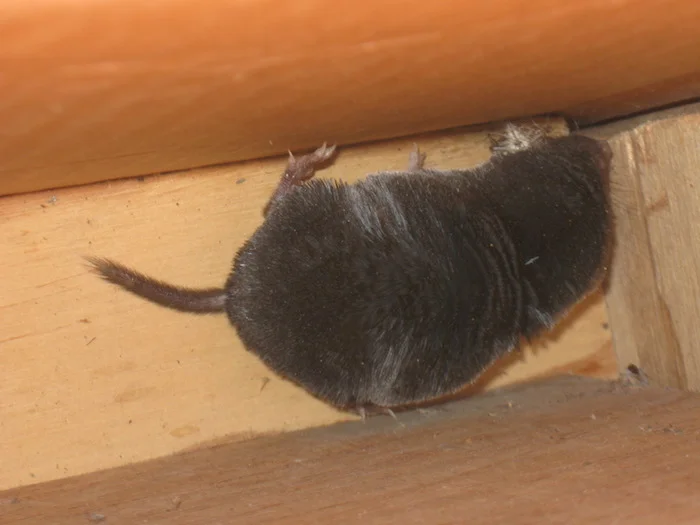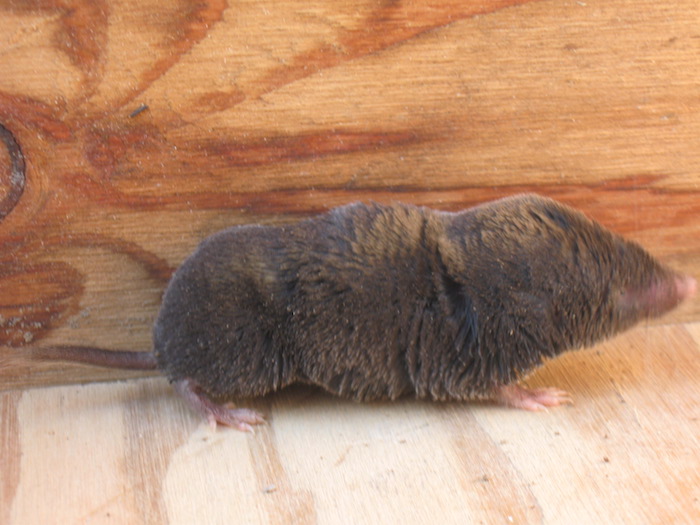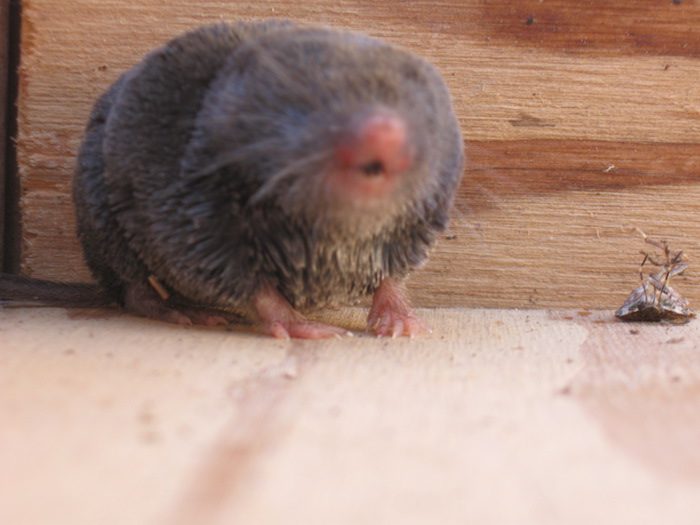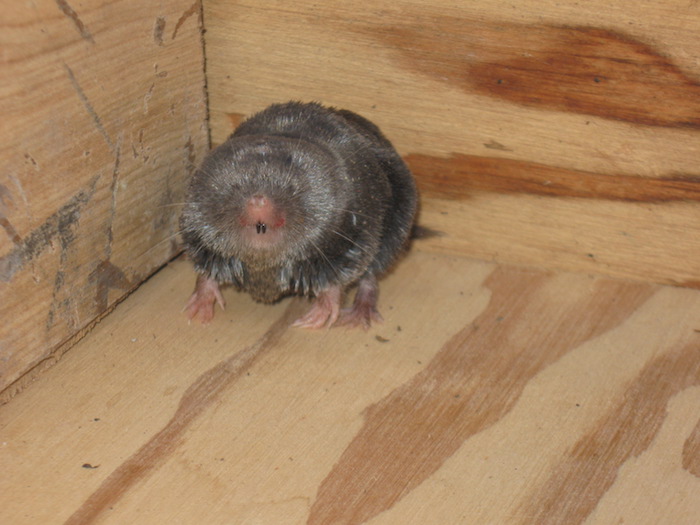This critter is the Short Tailed shrew. It’s fur is gray with a texture like velvet. The eyes are very small, and are almost unnoticeable. It’s incisors are dark brown (look closely in the pictures below). Presumably, the iron deposits that darken the teeth also help harden them. This is helpful considering that their teeth are not continually growing like those in mice. Their bite is toxic and can subdue an animal larger than the shrew itself. In fact, they are the only venomous mammal
They are primarily insectivorous, but occasionally feeds on grain. They can consume up to three times their weight in one day.
If you ever catch a Short Tailed Shrew one of the first things that you may notice is their aroma. They have a very definite pungent smell. It smells somewhat like urine but more acidic. Some families that have these critters in their homes say that they notice a smell. I would suspect that the longer the shrews have been in a home the more noticeable a smell might become.
So, if you see a small rodent run through your kitchen, how do you know if it is a shrew or a mouse? First the color. Shrews are gray while White Footed Mice are more of a brown color(see post on White Footed (deer) Mice in this blog). House Mice also tend to be more brown than the Short Tailed Shrew.
Second, the eye of the shrew is so small it is almost imperceptible. Mice have large bulging eyes.
Third, and for me probably the most telling, travel pattern. When mice appear, they hug the wall and dart quickly from one hiding place to another. Shrews don’t dart as quickly as mice. Though they do tend to travel near the wall and try to stay hidden, they are not as quick as mice. Also, generally speaking, they are more likely to wander out of the normal mouse travel path as though they were looking for something (probably a meal).







